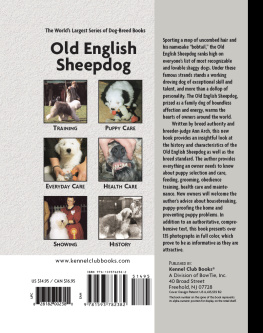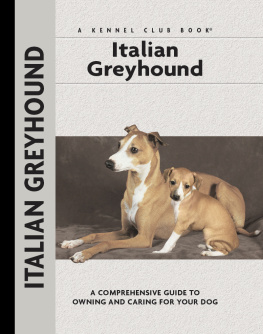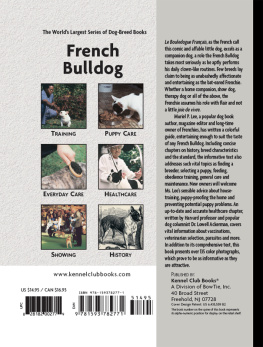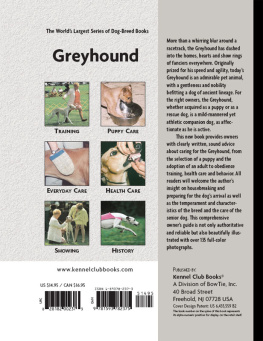Physical Characteristics of the Old English Sheepdog
(from the American Kennel Club breed standard)
Skull: Capacious and rather squarely formed giving plenty of room for brain power. The whole well covered with hair.
Ears: Medium sized and carried flat to the side of the head.
Eyes: Brown, blue or one of each.
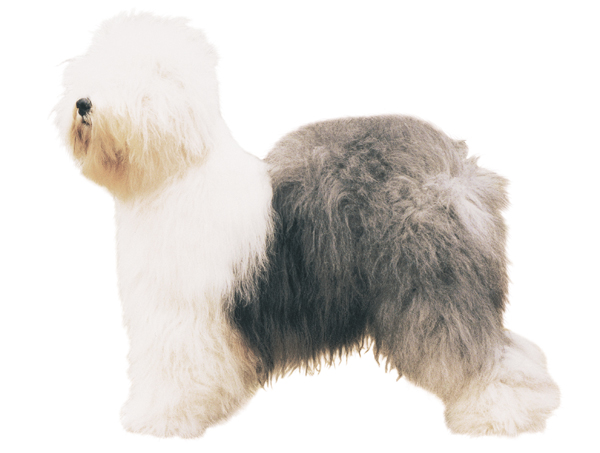
Neck: Fairly long and arched gracefully.
Nose: Always black, large and capacious.
Jaw: Fairly long, strong, square and truncated.
Body: Rather short and very compact, broader at the rump than at the shoulders, ribs well sprung and brisket deep and capacious.
Forequarters: Shoulders well laid back and narrow at the points. The forelegs dead straight with plenty of bone. The measurements from the withers to the elbow and from the elbow to the ground are practically the same.
Topline: Stands lower at the withers than at the loin with no indication of softness or weakness.
Tail: Docked close to the body, when not naturally bob tailed.
Height: Dogs: 22 inches (55.8 cm) and upward. Bitches: 21 inches (53.3 cm) and upward.
Hindquarters: Round and muscular with well let down hocks. When standing, the metatarses are perpendicular to the ground when viewed from any angle.
Color: Any shade of gray, grizzle, blue or blue merle with or without white markings or in reverse.
Coat: Profuse, but not so excessive as to give the impression of the dog being overly fat, and of a good hard texture.
Feet: Small and round, toes well arched, pads thick and hard, feet pointing straight ahead.

Contents
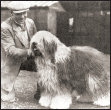
From Shepherds Dog to Sheepdog to the dog we know today as the Old English Sheepdog or Bobtail, this breed has grown from the obscure beginnings of herding dogs into one of the worlds most familiar breeds. Follow the breeds evolution and learn about the important people and dogs in OES history.
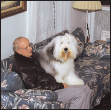
Best known for his abundant fluffy coat, the Old English Sheepdog has a lot of personality under all that hair! Learn about the breeds playful demeanor, unique physical characteristics and requirements for the ideal home, and find out if youre the right owner for a Bobtail.
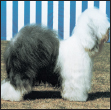
Learn the requirements of a well-bred Old English Sheepdog by studying the description of the breed set forth in the American Kennel Club standard. Both show dogs and pets must possess key characteristics as outlined in the breed standard.
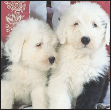
Be advised about choosing a reputable breeder and selecting a healthy, typical puppy. Understand the responsibilities of ownership, including home preparation, acclimatization, the vet and prevention of common puppy problems.
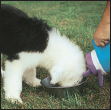
Enter into a sensible discussion of dietary and feeding considerations, exercise, grooming, traveling and identification of your dog. This chapter discusses Old English Sheepdog care for all stages of development.
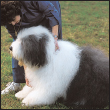
By Charlotte Schwartz
Be informed about the importance of training your OES from the basics of housebreaking and understanding the development of a young dog to executing obedience commands (sit, stay, down, etc.).
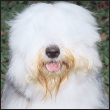
Discover how to select a qualified vet and care for your dog at all stages of life. Topics include vaccinations, skin problems, dealing with external and internal parasites and common medical and behavioral conditions.
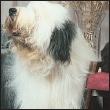
Consider the care of your senior OES, including the proper diet for a senior. Recognize the signs of an aging dog, both behavioral and medical; implement a special-care program with your vet and become comfortable with making the final decisions and arrangements for your senior Old English Sheepdog.
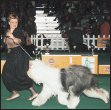
Enter the dog-show world and find out how dog shows work and how a champion is made. Go beyond the conformation ring to obedience, herding and agility trials.
K ENNEL C LUB B OOKS O LD E NGLISH S HEEPDOG
ISBN 13: 978-1-59378-238-2
eISBN 13: 978-1-59378-994-7
Copyright 2004 Kennel Club Books A Division of BowTie, Inc.
40 Broad Street, Freehold, NJ 07728 USA
Cover Design Patented: US 6,435,559 B2 Printed in South Korea
All rights reserved. No part of this book may be reproduced in any form, by photostat, scanner, microfilm, xerography or any other means, or incorporated into any information retrieval system, electronic or mechanical, without the written permission of the copyright owner.
Photographs by:
Norvia Behling, Doskocil, Isabelle Franais, Carol Ann Johnson, Mikki Pet Products and Alice Roche.
The owner wishes to thank Maryanne Henry, William & Jan Lichtenberger, John Perry, Arlene Pietrocola and the rest of the owners of the dogs featured in this book.
Illustrations by Rene Low.

An English farmer, circa 1892, with a pair of working Old English Sheepdogs. The OES was at one time the most popular working breed.
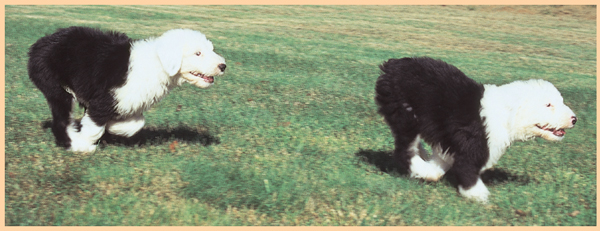
Old English Sheepdogs are active, dedicated and hard-working yet fun-loving dogs. Their instinctive herding traits and abilities are evident in the breed even as pups.

The background of the Old English Sheepdog (or Bobtail) is certainly misty. In Brian Vesey-Fitzgeralds 1948 The Book of the Dog, the author recounts the earliest reference to the Old English Sheepdog, made by Columella. Famous artists such as Van Eyck and Drer painted portraits of dogs resembling the Bobtail as early as the 15th century.
In the early 1700s, George-Louis Leclerc, known as Count de Buffon, describes 37 different varieties of dogs, including the Shepherds Dog in the first group. The Shepherds Dog was described as having a sharp foxlike muzzle, erect ears and an instinct for protecting flocks. All of these features still apply to various shepherding breeds today. The breeding of types of herding dogs suited to different terrains and climatic conditions undoubtedly brought about the breeds that we now know. In
Next page
